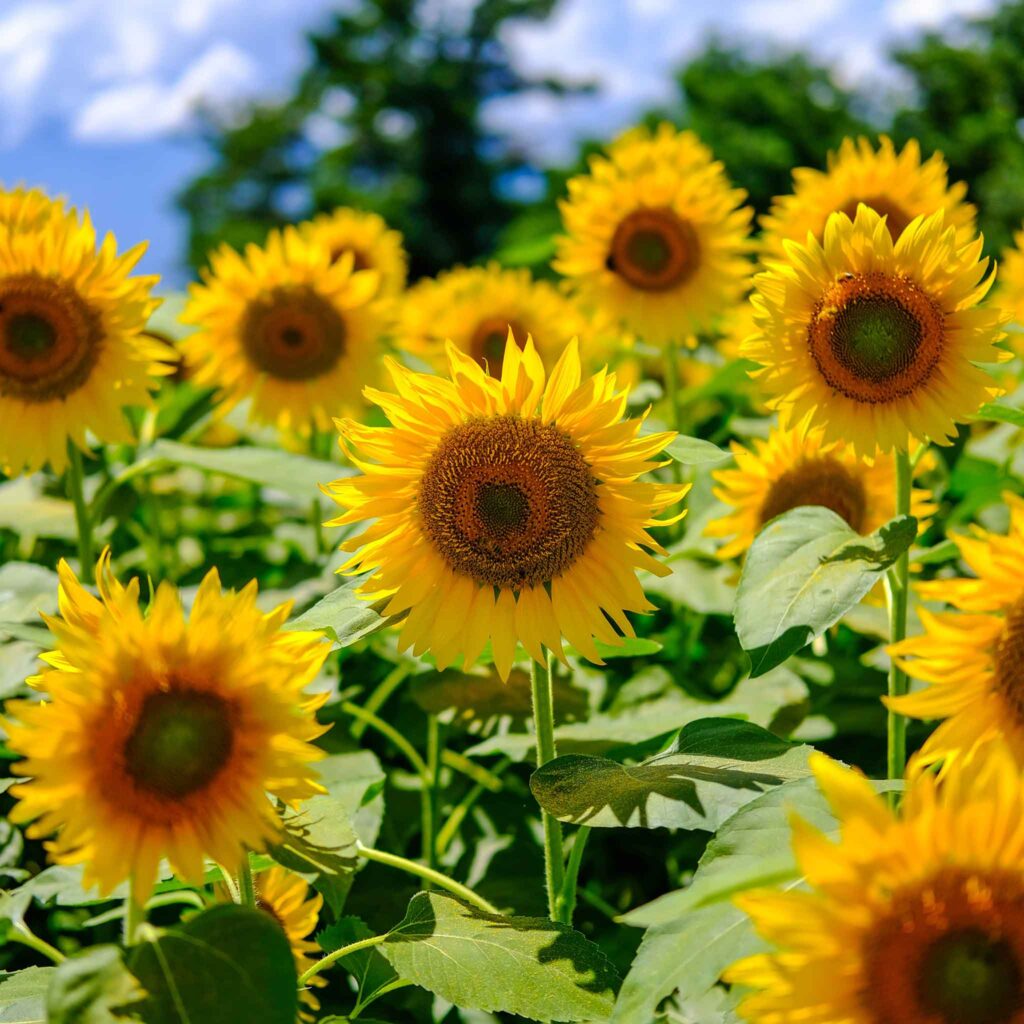Rhododendron. Hydrangea. Viola. Aster. Phlox. These are just some of the botanical “Latin” names you already know. OK. OK. Nobody needs to know them all, and I surely don’t.

But I’ve learned that they’re the only way to be sure you’re getting the seeds or plants you really want. For example, all sunflowers are named “Helianthus,” (after “Helios,” Latin for “the sun.”) but as you know, there are dozens of species of sunflower. Some are 8 ft. tall, others are about 2 ft. or less. So if you want a certain one, you need to know the botanical name—it’s usually two words, sometimes three. The first word in a Latin name is the “Genus”, the second one is the “species.”
The common wild annual sunflower is called Helianthus annuus. (See how close that is?—annuus tells you it’s an annual.) By the way, that sunflower is the original wildflower and the State Flower of Kansas. It grows only about 4 ft. tall and has medium-sized flowers. On our Sunflower Seed Page, you’ll see dozens of different sizes and colors called Helianthus annuus—that’s because they’re all annuals. But each has what we call a commercial name, too. Like Autumn Beauty or Teddy Bear. (You can bet Teddy Bear is not too tall.)
Then there are the garden giant sunflowers we all know. They grow up to 8 ft. and have huge flowers with seed-filled centers. These are hybrids, created to produce sunflower seed. And the name? Helianthus annuus giganteum. See? You can easily read that add-on. (The commercial name of the one we sell is “Mammoth Grey-Stripe.” That is “giganteum!”)
A famous tall perennial sunflower is named Helianthus maximiliani. For some reason, it’s named for someone called Maximilian. Perhaps the doomed Emperor of Mexico who was named Maximilian I. (He was impeached and executed by firing squad in 1867!)

Another simple example: The genus name for all the lilies is “lilium.” And there is a famous wild woodland lily in most of North America called Lilium canadense. As you can “see” in the botanical name, this tall, beautiful wildflower is commonly called the Canada Lily. Simple. If you think that tells you that this lily grows in cold climates into Canada, you’d be correct. (And yes, you know by now that botanical or Latin names are usually shown in italics.)
The really useful botanical names are the ones that correctly describe the plant. Here are a few common examples. You can “see” the common names in these. All you need to know is that “grand” means large and “flora” is for flower. Likewise, folium, folia, or folius mean leaves or foliage. You already know rosa is rose, and lilium is lily. Here’s a 5-minute lesson in “reading” botanical names, based on some you already know.
| English | Latin | Botanical Name | Common Name |
| Canada | canadense | Lilium canadense | Canada Lily |
| Large-flowered | grandiflora | Rosa grandiflora | Grandiflora Rose |
| Panicle-flowered* | paniculata | Phlox paniculata | Phlox |
| Heart-leaved* | cordifolia | Aster cordifolia | Heart-leafed Aster |
| Swamp | palustris | Rosa palustris | Swamp Rose |
* A panicle is a cluster of smaller flowers making up one large bloom. The Latin word for heart is “cor” or “cordis.” Latin for swamp is “palustris.”